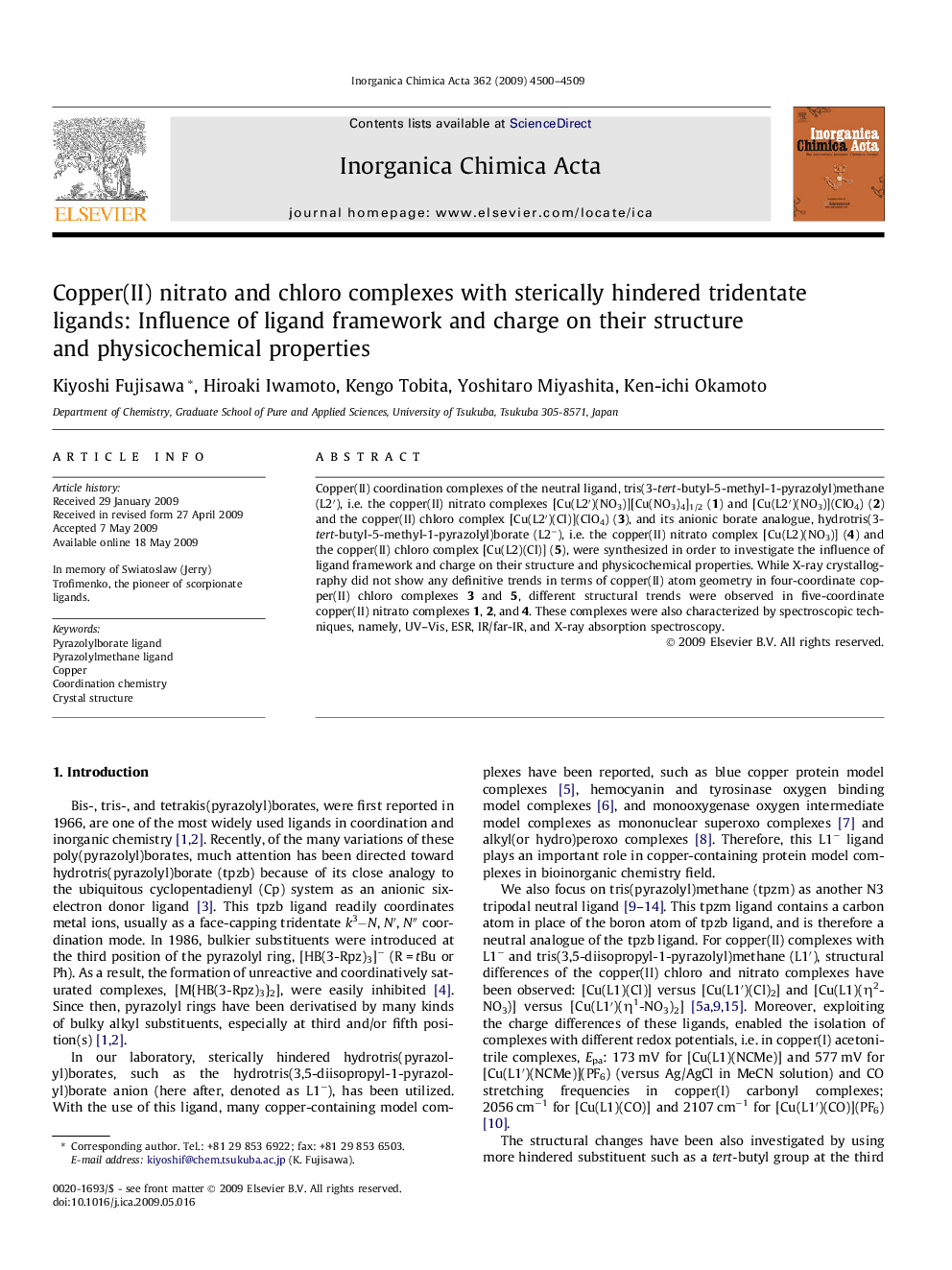| کد مقاله | کد نشریه | سال انتشار | مقاله انگلیسی | نسخه تمام متن |
|---|---|---|---|---|
| 1309568 | 975213 | 2009 | 10 صفحه PDF | دانلود رایگان |

Copper(II) coordination complexes of the neutral ligand, tris(3-tert-butyl-5-methyl-1-pyrazolyl)methane (L2′), i.e. the copper(II) nitrato complexes [Cu(L2′)(NO3)][Cu(NO3)4]1/2 (1) and [Cu(L2′)(NO3)](ClO4) (2) and the copper(II) chloro complex [Cu(L2′)(Cl)](ClO4) (3), and its anionic borate analogue, hydrotris(3-tert-butyl-5-methyl-1-pyrazolyl)borate (L2−), i.e. the copper(II) nitrato complex [Cu(L2)(NO3)] (4) and the copper(II) chloro complex [Cu(L2)(Cl)] (5), were synthesized in order to investigate the influence of ligand framework and charge on their structure and physicochemical properties. While X-ray crystallography did not show any definitive trends in terms of copper(II) atom geometry in four-coordinate copper(II) chloro complexes 3 and 5, different structural trends were observed in five-coordinate copper(II) nitrato complexes 1, 2, and 4. These complexes were also characterized by spectroscopic techniques, namely, UV–Vis, ESR, IR/far-IR, and X-ray absorption spectroscopy.
Copper(II) coordination complexes of the neutral ligand, tris(3-tert-butyl-5-methyl-1-pyrazolyl)methane and its anionic borate analogue, hydrotris(3-tert-butyl-5-methyl-1-pyrazolyl)borate were synthesized and structurally characterized. While X-ray crystallography did not show any definitive trends in terms of copper(II) atom geometry in four-coordinate copper(II) chloro complexes 3 and 5, the different structural trend was observed in five-coordinate copper(II) nitrato complexes 1, 2, and 4. These complexes were also characterized by spectroscopic techniques, namely, UV–Vis, ESR, IR/far-IR, and X-ray absorption spectroscopy.Figure optionsDownload as PowerPoint slide
Journal: Inorganica Chimica Acta - Volume 362, Issue 12, 15 September 2009, Pages 4500–4509